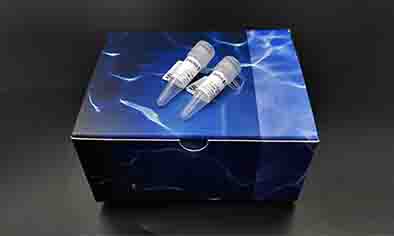產(chǎn)品描述:
RANKL and RANK are members of the TNF superfamily of ligands and receptors that play an important role in the regulation of specific immunity and bone turnover. RANK (receptor) was originally identified as a dendritic cell-membrane protein, which, by interacting with RANKL, augments the ability of dendritic cells. These dendritic cells then stimulate na?ve T-cell proliferation in a mixed lymphocyte reaction, promote the survival of RANK+ T-cells, and regulate T-cell-dependent immune response. RANKL, which is expressed in a variety of cells, including osteoblasts, fibroblasts, activated T-cells and bone marrow stromal cells, is also capable of interacting with a decoy receptor called OPG. Binding of soluble OPG to sRANKL inhibits osteoclastogenesis by interrupting the signaling between stromal cells and osteoclastic progenitor cells, thereby leading to excess accumulation of bone and cartilage. Human RANKL is reactive on murine cells. Recombinant Human sRANKL is a 20.0 kDa polypeptide comprising the TNF-homologous region of RANKL (176 amino acid residues).
Source: E.coli
Synonyms: soluble Receptor Activator of NF-κB Ligand, TNFSF11, TRANCE (TNF-related activation-induced cytokine), OPGL, ODF (Osteoclast differentiation factor)
AA Sequence: PAMMEGSWLDVAQRGKPEAQPFAHLTINAASIPSGSHKVTLSSWYHDRGWAKISNMTLSNGKLRVNQDGFYYLY
ANICFRHHETSGSVPTDYLQLMVYVVKTSIKIPSSHNLMKGGSTKNWSGNSEFHFYSINVGGFFKLRAGEEISIQVSNPSLLDPDQD
ATYFGAFKVQDIDLEHHHHHH
Purity: ≥ 98% by SDS-PAGE gel and HPLC analyses.
Biological Activity: 通過測定hRANKL在Raw 264.7細胞中誘導TRAP活性的能力來確定其生物活性
Calculated Molecular Weight: 20.5 kDa
Accession Number: O35235
Gene ID: 21943
crossreactivity:Human,Rat


